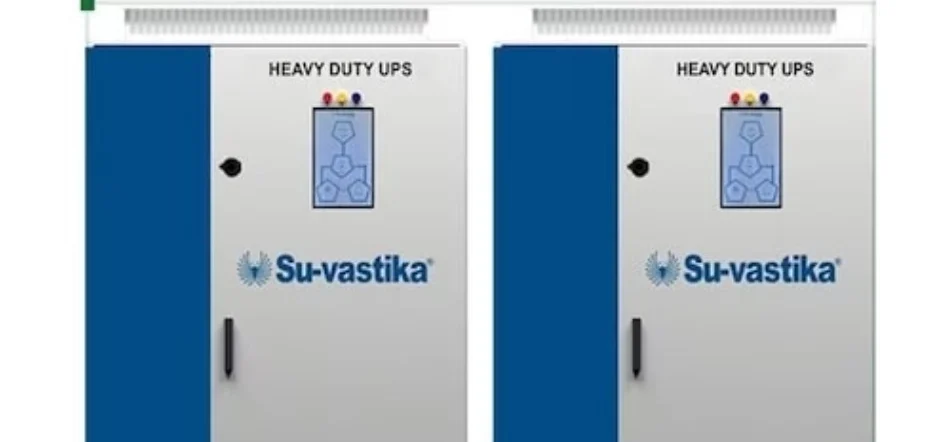Diesel Generator vs. ESS which solution is best in today’s climate?

You can see diesel sets everywhere, whether you visit shopping centers, residential communities, or office buildings, especially in underdeveloped and emerging countries like India. However, this practice of getting power through Diesel generators in case of power failure is fast becoming a thing of the past. This is because these DG sets not only pollute our environment but emit an irritating sound that often deprives us of a good night’s sleep.
Su-vastika has created the ESS (Energy Storage Solutions), which uses a lithium battery as a storage option. It can be installed with or without solar power and aids in operating the electronic generator silently. This ESS has a 10KVA to 500KVA capacity range, looks beautiful in any complex, and offers dependable backup during a power outage.
Advantage of ESS over DG Set
- ESS provides instant power backup.
One of the main benefits of ESS is that, unlike DG sets, which break in the event of a power outage, ESS does not have this problem. This technology has no jerks or breaks as it starts immediately. ESS is automatic and seamless, in stark contrast to DG systems that require roughly a minute to resume the electricity through the generator.
- The running cost of ESS is low.
The cost of running a diesel generator is three times or more than the power provided by the power company, making ESS a special and less expensive solution than running a diesel generator.
As the ESS has a battery as a backup, the consumption per unit of electricity produced is further decreased in cases of 50% or 70% ESS loading, as opposed to diesel generators, where the cost is unaffected by lower load because the diesel consumption doesn’t vary significantly.
- ESS has a longer lifespan
The ESS has a shelf life of 50 years as compared to the diesel generator’s 10-year lifespan. Even their battery can last between 7 and 10 years, representing significant cost-savings in operation.
- ESS is easier and cheaper to maintain
Diesel generators contain moving parts and require a battery to start automatically, making it important to service them every 300 hours or even less in some cases. Since a DG set includes moving parts, we also need an attendant to fill it up with diesel. However, an attendant is unnecessary for the ESS because it has no moving parts.
- ESS can run on Solar
The cost of the system can be recovered in 2 to 3 years if we include a solar feature that allows the batteries to be charged using solar energy. Since solar panels can last up to 25 years, the cost of power generation is also significantly reduced.
There is no substitute for such a low cost of electricity because the solar-powered ESS can be built anywhere there is space for solar panels and where solar energy can be used effectively. Even with power on the grid, this system will be able to run on solar and battery power if it is available since the cost of the power will be far lower per unit than the cost of grid power. This will save money on electricity even when power is available on the grid.
Therefore, it is safe to say that ESS is the future of power backup, given all these benefits over DG sets.
About Su-vastika Solar
Su-vastika Solar is a start-up company that provides revolutionary power storage solutions and is driven by technology, enthusiasm, and invention. Regarded as one of India’s leading solar power generation firms, the company focuses on meeting the specific demands of Indian customers by delivering world-class products designed to survive the Indian environment and temperature conditions.
The technology patents underpin their innovative products making the Su-vastika Heavy Duty UPS truly efficient.
Let us take a look at some of Su-vastika’s technology patents:
- Patent 396079 – A System And Method For Providing Backup To A Consumer-Friendly Lift/Elevator.
Based on 3 Phase storage solutions explicitly made for escalators and lifts, ARD is a ten-year-old device technology used in lifts and escalators that can not only stop the lift abruptly but can only help the lift open the gate at the adjacent floor. This technology has a very fast switchover time, and no lift is notified of a power outage. Even when the lifts or escalators are not in use, they continue to function normally. The elevators and escalators continue to operate regularly even while not in use.
- Patent 399112 – An IoT-Based System And Method For Multiple Battery Selection.
The server in this IoT-based system has charging profiles for every type of battery. The microprocessor of the EV charger, solar charge controller, inverter, UPS, and other devices can be added to and programmed with any new battery charge profile provided by the battery manufacturer via IoT.
- Patent 403781 – An IoT-Based System To Perform Multiple Tests With Adjustable Test Sequence And Test Limits To Calibrate The Testing Device Periodically.
Inverter/ UPS transformers, online UPS, stabilizer transformers, isolation transformers for solar systems, electric vehicle chargers with isolation transformers, and other transformers used in various applications are all covered by this patent. Before being employed in the production process, each of these single-phase or three-phase transformers must pass certain testing requirements. It is tested and analyzed online by uploading the data to the server. Depending on the demands of the various transformer parameters, the testing parameters can be deployed via the server and modified. Numerous parameters that Su-vastika has developed will be put to the test utilizing Power Analyzers and other testing tools.
- Patent 403377 – Hand Held Test/ Comparison Device For Comparing
In order to prevent damage, BMS safeguards against overcharging, overcurrent, over-voltage, overcurrent leakage, under-temperature, leak current and discharging below the threshold limit. BMS also aids in the management of temperature and energy. Both active and passive BMS technologies can be tested using this new IoT-based BMS technology breakthrough.

Leave a Reply